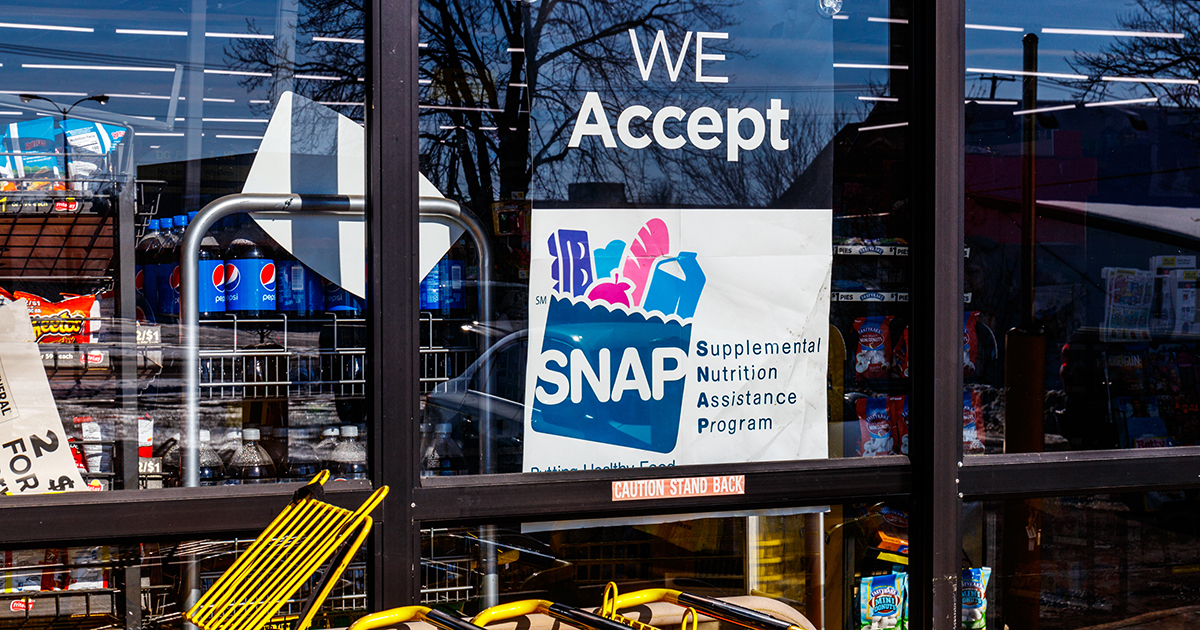The SNAP Employment and Training Evaluation

Overview
The Supplemental Nutrition Assistance Program (SNAP) — formerly the food stamp program —is a critical work support for low-income people and families. Although SNAP has included various employment and training requirements for adult recipients to maintain their eligibility since the 1970s, the SNAP Employment and Training (SNAP E&T) program was established as part of the Food Security Act of 1985 and largely focuses on able-bodied adults without dependents as part of the 1996 welfare reform legislation. The purpose of the SNAP E&T program is to help recipients meet work requirements and gain the skills, training, or experience they might need to increase their ability to obtain regular employment and increase their income. The SNAP E&T program is administered on the federal level by the U.S. Department of Agriculture’s Food and Nutrition Service.
The SNAP E&T evaluation was authorized by the Agricultural Act of 2014. This “farm bill” provided a total of $200 million to the U.S. Department of Agriculture to fund up to 10 new SNAP employment and training pilot projects and to evaluate their effectiveness. The SNAP E&T pilot projects funded through these grants are developing and testing new ways that SNAP E&T programs and services might increase the number of SNAP work registrants who obtain unsubsidized employment, increase their earned income, and reduce their reliance on public assistance.
An evaluation team, including researchers from Mathematica Policy Research, MDRC, Insight Policy Research, Kone Consulting, and DIR, are conducting a randomized controlled trial (RCT) of each of the 10 new SNAP E&T pilot programs to assess the extent to which the new types of job search, training, education, case management, and other services help SNAP recipients. MDRC is leading the RCTs in four of the 10 sites — in Georgia, Illinois, Kansas, and Virginia. The evaluation results will help federal, state, and local policymakers learn what might best help SNAP recipients obtain employment and increase their earnings.
Interim results from the evaluation were released in September 2021.
Additional Project Details
Agenda, Scope, and Goals
The SNAP E&T evaluation is a random assignment research study. MDRC is collaborating with Mathematica Policy Research, which is the primary and lead organization on the project. Components of the evaluation include an implementation study and participation, impact, and benefit-cost analyses.
The research questions for each pilot site are:
- What new SNAP E&T pilot services are put into place, and how? To what extent do individuals participate in the new offered services? Are individuals with certain characteristics and backgrounds more likely to take up the services than others? How long do individuals participate in the services?
- Do the new SNAP E&T pilot programs result in individuals being more likely to receive services, receive different types of services, or stay longer in services — compared with any employment and training services that individuals can currently receive?
- Do the new SNAP E&T pilot services improve SNAP recipients’ outcomes related to employment, income, reliance on SNAP or other types of benefits, and food security — compared with other employment and training services that individuals can currently receive? If so, how long does it take for such improvements to emerge? Are the improvements larger for individuals with certain characteristics and backgrounds? Do some services generally seem to be more effective than others?
- How much does it cost to deliver the new SNAP E&T pilot services? How do the services’ benefits compare with their costs?
Design, Sites, and Data Sources
In 2015, the U.S. Department of Agriculture’s Food and Nutrition Service competitively selected and funded 10 pilot projects; the projects operate in the following states: California, Delaware, Georgia, Illinois, Kansas, Kentucky, Mississippi, Vermont, Virginia, and Washington. MDRC is leading the RCTs in 4 of the 10 states — Georgia, Illinois, Kansas, and Virginia. As part of the evaluation, all pilot projects are receiving technical assistance with implementing the new E&T services from the evaluation team.
The evaluation team is rigorously measuring the effects of the new pilot services through a randomized controlled trial in each of the 10 states. In this design, SNAP applicants and recipients who are eligible for the new SNAP E&T pilot services will be randomly assigned to one of two or more research groups: a group eligible for the usual SNAP employment and training services; a group eligible for the new SNAP E&T pilot services; or, possibly, a group eligible for a somewhat different version of the new SNAP E&T pilot services. By comparing the employment, earnings, SNAP receipt, and other outcomes of the groups over time, the evaluation team will measure the extent to which the new SNAP E&T pilot services help people more than the usual SNAP E&T services, and determine whom the new services help most.
The evaluation will analyze a variety of data: baseline data collected at the time of random assignment, program activity data from each site, and administrative data (for instance, SNAP receipt data, welfare receipt records, and unemployment insurance wage records data). In addition, two follow-up surveys will be conducted for a subsample of study participants (one at
12 months after their study entry and second one at 36 months, with a possibility of a third follow-up survey at 60 months).
In addition, detailed information will be collected on the implementation of the pilot services through three rounds of site visit interviews with program staff and through participant focus groups. Collected cost data will include program financial data and staff time-use surveys.






